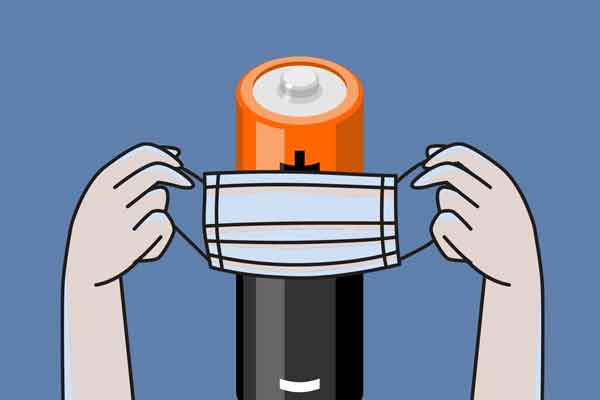Old masks transformed into batteries
What should we do with the growing piles of discarded face masks? Use them to power the world, say scientists.

Face masks may one day power electric cars and solar power plants
What do face masks and batteries have in common? Potentially a lot, according to a paper published in the Journal of Energy Storage.
Researchers from the National University of Science and Technology in Russia (NUST MISiS) along with US and Mexican colleagues have used discarded medical face masks to create batteries.
The batteries they created from used face masks are thin, flexible, low-cost and are also disposable, according to their paper.
The researchers have also made use of waste blister packs from medications to form the battery shell, with graphene the only additional material needed to create the batteries.
Masks are traditionally tricky to dispose of and are toxic when burned. Yet due to the pandemic, the researchers estimate that more than 130 billion masks are being discarded around the globe every month.
"Highly efficient SCs are possible to make from medical waste and this could help to decrease the environmental contamination by plastic residuals."

“We studied the electrochemical performance of solid-state supercapacitors (SCs) made with surgical face mask waste and blister packs recycled from paracetamol packaging,” the researchers said.
“The results presented here revealed that highly efficient SCs are possible to make from medical waste and this could help to decrease the environmental contamination by plastic residuals.”
The researchers say their batteries are better in many ways than conventional batteries, not only because they are not made from recycled waste, but they are also less expensive to manufacture.
Moreover, the new batteries have a high density of stored energy and electrical capacity – up to 98 watt-hours/kg, on par with their conventional counterparts.
The batteries can currently power electrical gadgets and appliances, but the researchers say their goal is to make batteries that can power EVs, solar power plants and other applications.
The tech
To create the batteries, the used face masks are first disinfected with ultrasound and then dipped in ‘ink’ made of graphene, which saturates the mask, says Professor Anvar Zakhidov, scientific director of the project at NUST MISiS. The material is then pressed under pressure and heated to 140°C. A separator – also made of mask material – with insulating properties is then placed between the two electrodes made of the new material. It is saturated with a special electrolyte, and then a protective shell is created from the material of medical blister packs such as paracetamol.





